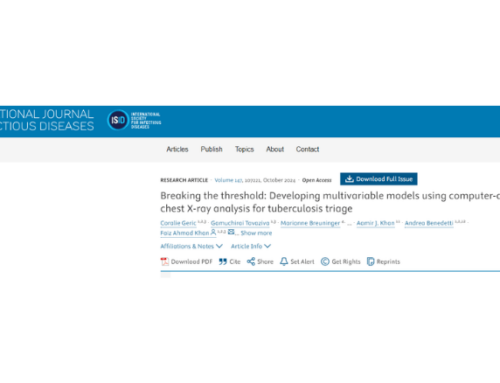Evaluation of tuberculosis diagnostic test accuracy using Bayesian latent class analysis in the presence of conditional dependence between the diagnostic tests used in a community-based tuberculosis screening study
🔗2023
🔗Journal/Publication: PLOS one
🔗Read it in full version: https://doi.org/10.1371/journal.pone.0282417
Abstract
Diagnostic accuracy studies in pulmonary tuberculosis (PTB) are complicated by the lack of a perfect reference standard. This limitation can be handled using latent class analysis (LCA), assuming independence between diagnostic test results conditional on the true unobserved PTB status. Test results could remain dependent, however, e.g. with diagnostic tests based on a similar biological basis. If ignored, this gives misleading inferences. Our secondary analysis of data collected during the first year (May 2018 –May 2019) of a community-based multi-morbidity screening program conducted in the rural uMkhanyakude district of KwaZulu Natal, South Africa, used Bayesian LCA. Residents of the catchment area, aged ≥15 years and eligible for microbiological testing, were analyzed. Probit regression methods for dependent binary data sequentially regressed each binary test outcome on other observed test results, measured covariates and the true unobserved PTB status. Unknown model parameters were assigned Gaussian priors to evaluate overall PTB prevalence and diagnostic accuracy of 6 tests used to screen for PTB: any TB symptom, radiologist conclusion, Computer Aided Detection for TB version 5 (CAD4TBv5≥53), CAD4TBv6≥53, Xpert Ultra (excluding trace) and culture. Before the application of our proposed model, we evaluated its performance using a previously published childhood pulmonary TB (CPTB) dataset. Standard LCA assuming conditional independence yielded an unrealistic prevalence estimate of 18.6% which was not resolved by accounting for conditional dependence among the true PTB cases only. Allowing, also, for conditional dependence among the true non-PTB cases produced a 1.1% plausible prevalence. After incorporating age, sex, and HIV status in the analysis, we obtained 0.9% (95% CrI: 0.6, 1.3) overall prevalence. Males had higher PTB prevalence compared to females (1.2% vs. 0.8%). Similarly, HIV+ had a higher PTB prevalence compared to HIV- (1.3% vs. 0.8%). The overall sensitivity for Xpert Ultra (excluding trace) and culture were 62.2% (95% CrI: 48.7, 74.4) and 75.9% (95% CrI: 61.9, 89.2), respectively. Any chest X-ray abnormality, CAD4TBv5≥53 and CAD4TBv6≥53 had similar overall sensitivity. Up to 73.3% (95% CrI: 61.4, 83.4) of all true PTB cases did not report TB symptoms. Our flexible modelling approach yields plausible, easy-to-interpret estimates of sensitivity, specificity and PTB prevalence under more realistic assumptions. Failure to fully account for diagnostic test dependence can yield misleading inferences.



